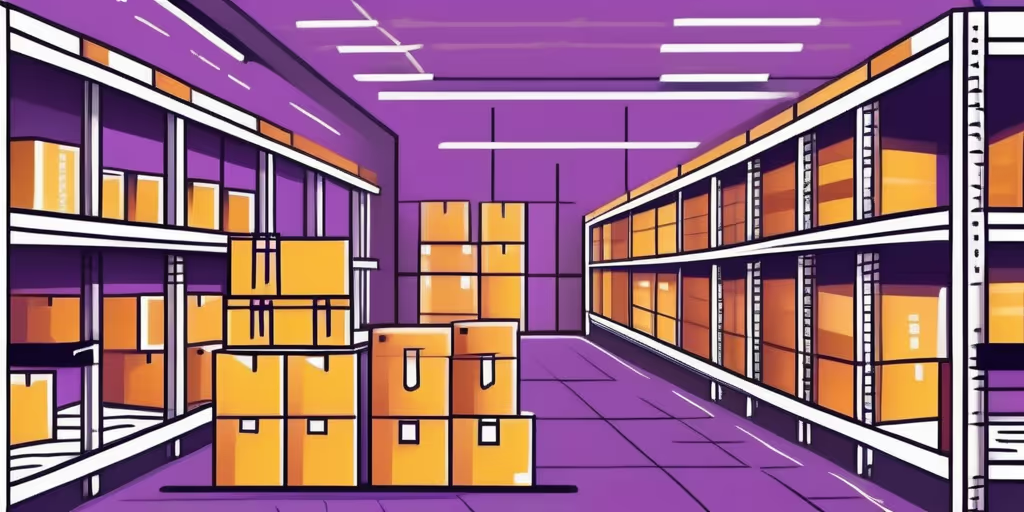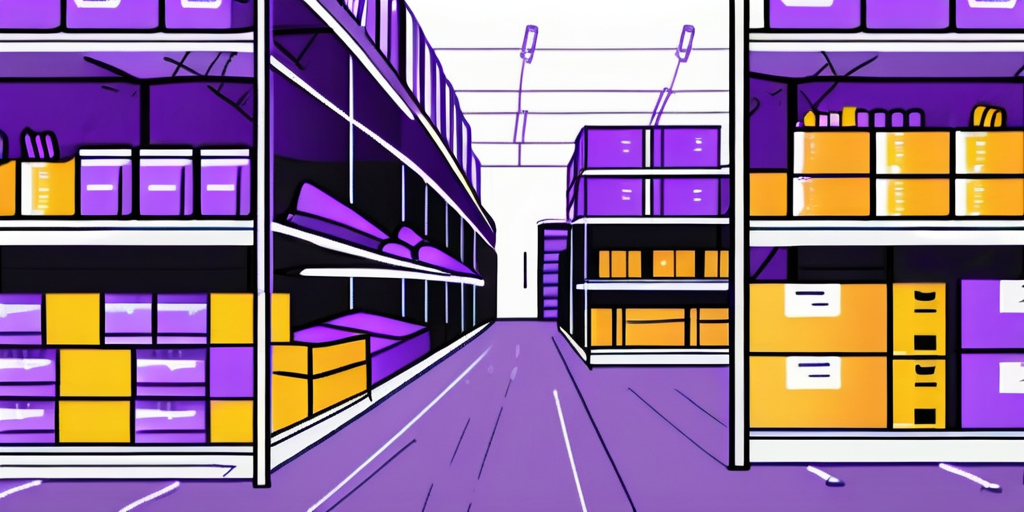
Amazon Seller Backorders refer to the process where a seller accepts orders for products that are currently out of stock or unavailable. This article aims to provide a comprehensive understanding of backorders on Amazon, including their definition, role in e-commerce, the process involved, and strategies for managing them effectively.
Backorders, in simple terms, are customer orders placed for products that are temporarily out of stock or not ready for immediate shipment. When a product is on backorder, it means that the seller does not have sufficient inventory to fulfill the order at that specific moment. Instead, the seller allows customers to place orders and ensures delivery once the product becomes available.

Managing backorders efficiently is crucial for businesses to maintain customer satisfaction and loyalty. It requires effective communication with customers regarding the status of their orders and estimated restocking timelines. Additionally, businesses need to have robust inventory management systems in place to accurately track backordered items and prevent overselling.
A backorder occurs when a seller accepts an order for a product that is currently out of stock or not readily available for shipment. It is a way for retailers to manage customer demand when inventory is low or unavailable.
Backorders can also provide valuable insights into product demand trends, helping businesses make informed decisions about inventory levels and future stocking needs. By analyzing backorder data, companies can identify popular products that frequently go out of stock and adjust their procurement strategies accordingly.
Backorders play a vital role in e-commerce, allowing sellers to keep sales flowing, maintain customer satisfaction, and manage inventory effectively. When used strategically, backorders can be advantageous for Amazon sellers, as they help to prevent sales from slipping away when a product is temporarily unavailable.
Moreover, backorders can be a strategic tool for launching new products or managing seasonal demand fluctuations. By offering backorders on high-demand items, businesses can gauge customer interest before fully restocking inventory, reducing the risk of overstocking or understocking.
When it comes to backorders on Amazon, it is essential to understand how the process works and the impact it can have on sellers.
Delving deeper into the intricacies of the Amazon backorder process sheds light on the dynamics at play. Sellers often face the challenge of maintaining a delicate balance between demand and supply. Backorders offer a strategic solution to this dilemma by allowing customers to place orders for products that are temporarily out of stock, ensuring a continuous flow of sales even during inventory shortages.
On Amazon, when a seller lists a product that is temporarily out of stock, they have the option to enable backordering. Customers can still place orders for the product, even though it is currently unavailable.
Moreover, the backorder system on Amazon is designed to streamline the fulfillment process for sellers. By leveraging backorders, sellers can efficiently manage customer expectations and optimize inventory turnover. This proactive approach not only boosts sales but also enhances customer satisfaction by offering a seamless shopping experience.
Once sufficient inventory becomes available, the seller ships the backordered products to the customers who had placed their orders during the out-of-stock period.
For Amazon sellers, backorders can have both positive and negative impacts. On the positive side, it enables sellers to capture sales even when inventory is low. It also helps in maintaining customer loyalty by allowing them to secure the product they want, even if it is temporarily unavailable.
Conversely, the repercussions of mismanaging backorders can be detrimental to sellers. From tarnishing their reputation to incurring additional costs, the pitfalls of mishandling backorders are manifold. Therefore, meticulous planning and execution are imperative to mitigate risks and capitalize on the benefits of backorders.
However, managing backorders effectively is crucial, as it can negatively impact seller metrics and customer satisfaction if not handled properly. The key is to strike a balance between selling products and ensuring timely fulfillment.
Effectively managing backorders is essential for maintaining smooth operations and customer satisfaction on Amazon. Here are some strategies that sellers can adopt:
Managing backorders effectively involves a delicate balance between supply and demand. By implementing robust inventory management systems and forecasting tools, sellers can anticipate potential backorders and take proactive measures to prevent stockouts. Additionally, establishing strong relationships with suppliers can help expedite the restocking process and reduce the likelihood of extended backorder periods.
Clear and timely communication with customers is crucial when it comes to managing backorders. Providing regular updates on the status of backordered products helps to build trust and keep customers informed. Utilizing Amazon's messaging system or automated email notifications can streamline the communication process and enhance customer satisfaction.
Furthermore, leveraging social media platforms and online forums to engage with customers experiencing backorders can humanize the seller-customer relationship. By addressing concerns, offering personalized solutions, and demonstrating a commitment to customer service, sellers can turn backorder situations into opportunities to showcase their dedication to customer satisfaction.
Understanding the benefits and potential drawbacks of implementing backorders is key for Amazon sellers to make informed decisions. Let's explore both sides:
Another significant benefit of utilizing backorders is the ability to test new products or variations without committing to a large inventory upfront. This flexibility allows sellers to introduce new items to the market and assess their popularity before investing heavily in stock.
Moreover, backorders may also lead to increased customer inquiries and support tickets, as buyers seek updates on the status of their orders. This influx of communication can place additional strain on seller resources, especially if not adequately prepared to handle the volume of inquiries.
While backorders can be beneficial in certain situations, preventing them altogether is often preferable. Implementing effective inventory management techniques is key to minimizing the occurrence of backorders on Amazon.
Backorders can be a headache for both sellers and customers on Amazon. Not only do they lead to delayed fulfillment and potential loss of sales, but they can also impact the seller's reputation and customer satisfaction. Therefore, taking proactive steps to prevent backorders is crucial for a smooth and successful selling experience on the platform.
Utilize inventory management software or tools, such as SmartScout, to accurately track stock levels, monitor sales velocity, and set up automated alerts for low-stock situations. Regularly replenishing inventory based on demand patterns can help prevent backorders and ensure smooth fulfillment processes.
Another effective technique is to implement a just-in-time inventory system, where stock is ordered only when it is needed. This approach minimizes excess inventory and reduces the risk of backorders by ensuring that products are restocked in a timely manner based on actual demand.
Amazon provides various tools and features to help sellers prevent backorders. Utilize functionalities like inventory alerts, automatic replenishment, and setting maximum order quantities to optimize stocking levels and minimize the chances of going out of stock or facing backorders.
Additionally, leveraging Amazon's Fulfilled by Amazon (FBA) service can help prevent backorders by allowing Amazon to manage your inventory, storage, and shipping. This can help streamline the fulfillment process and ensure that products are always available for customers, reducing the risk of backorders.
Backorders play a significant role for Amazon sellers, allowing them to maintain sales and customer satisfaction even during inventory shortages. However, proper management, communication, and proactive inventory practices are vital to effectively handle backorders. By implementing strategies and utilizing available tools, Amazon sellers can navigate backorders successfully and turn them into an opportunity to improve customer loyalty and optimize sales.
Ready to take your Amazon selling strategy to the next level? SmartScout is here to guide you through the complexities of the marketplace. Discover untapped opportunities with our comprehensive brand, product, and category insights.
Gain a competitive edge with in-depth analytics on market share and historical growth. Dive deep into competitor research with our keyword and advertising analysis tools, and learn which products are generating the most revenue and traffic. Don't miss out on the chance to elevate your business.
Start your Free Trial of the best-in-market software today and transform the way you manage backorders and grow your Amazon presence!
